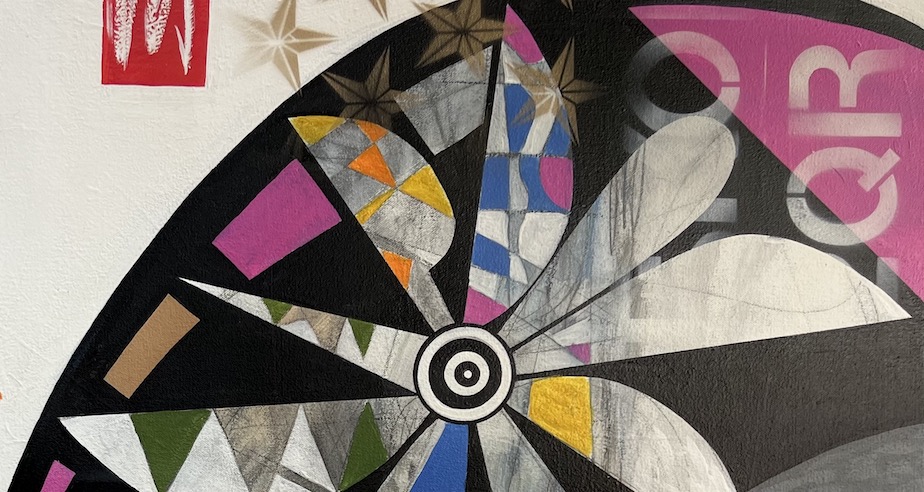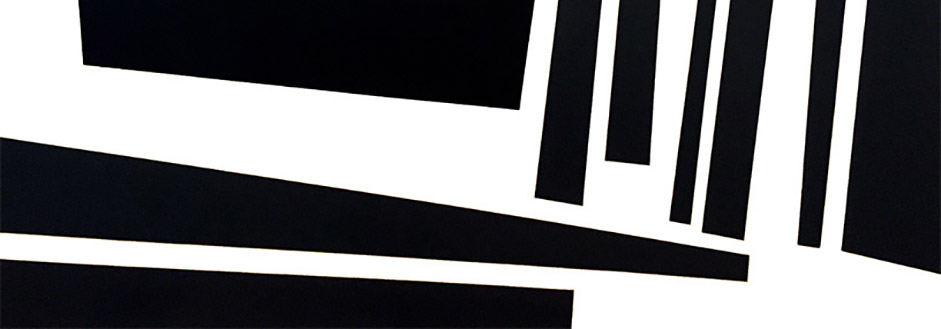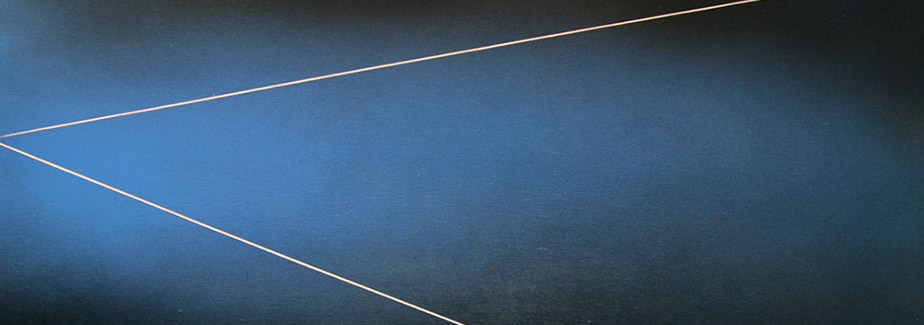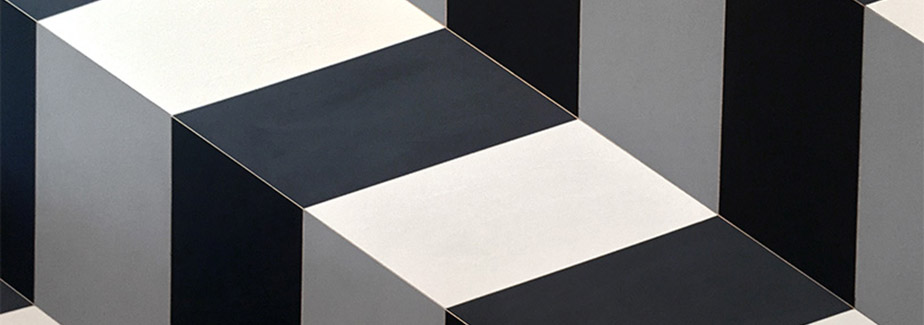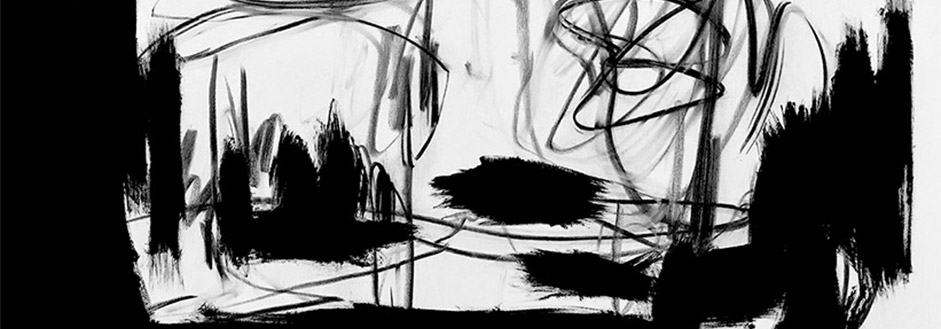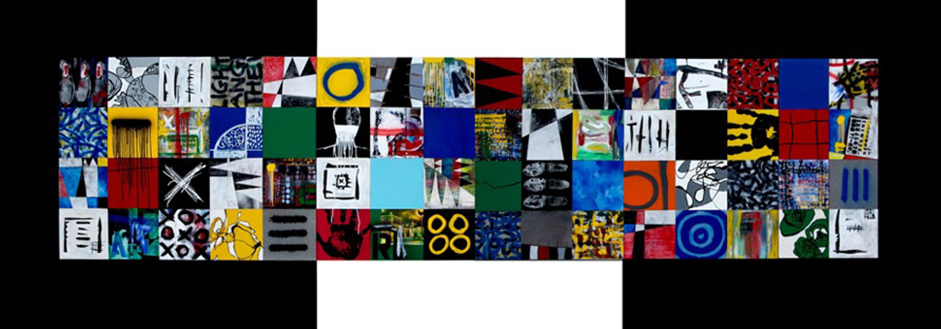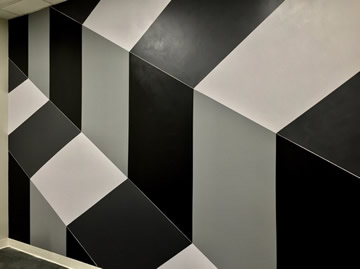
GALLERY REPRESENTATION AND CONTACT INFORMATION
Art Angels, Beverly Hills, CA - artangels.net
The Marshall Gallery, Scottsdale, AZ - The Marshall Gallery
Avant Gallery, Miami, FL- avantgallery.com
Able Fine Art Gallery, New York City and Seoul, Korea - ablefineartgalleryny.com
Unit London, London, England - unitlondon.com
Steve Hickok
EXHIBITIONS & COMMISSIONS
|
2022 2021 2020 2019 2017 2016 2015 2014 2013 |
2012 2011 2010 2009 2005-2008 2004 1997-1994 1993-1989 MEMBERSHIPS ACCOMPLISHMENTS |
|
Artist Statement Some of my creations are consciously selected themes. At other times they are a mystery, only revealed as the paintings are complete. In all, they represent the journey of life with its sharp turns and labyrinthine passages. I love strong lines, convincing textures, powerful shapes and contrast. I’m passionate about allowing nature to direct my work, which is why I paint and render on wood with its endless personalities. My travels have allowed me to experience the beauty and diversity of motifs and cultures around the world. The multiple square paintings (“Coalesce”) are snapshots of the places and people who have enriched my spirit. And “Passages” is a meditation on ups and downs, climbing and descending through this world in the endless search for home. Though he was formed by the Southwest, Steve's travels have taken him around the world. His work, therefore, reveals a broad cultural mix, blending Asian, European and North American elements. - Steve Hickok |
|
About the Artist An artist of international stature, Steve Hickok has exhibited his work throughout North America and the world (London, Paris, and Seoul) alongside legendary masters—Matisse, Picasso, and Dali. Steve has enjoyed considerable success, but his focus has not been solely on his own work. For over twelve years he has collaborated with younger artists, educating and encouraging them in the pursuit of their careers. Hickok, himself, was the youngest artist accepted by the Suzanne Brown Gallery in Scottsdale, Arizona where he exhibited along with Fritz Scholder and Ed Mell. His residence and studio are in Atlanta, Georgia. |
|
Son of the Southwest, Descendent of Wild Bill Hickok was born in Phoenix, Arizona on January 31, 1959. From the earliest days, his artistic vision was molded by the harsh beauty and rough topography of the American Southwest. It was perhaps inevitable that the matrix of his style would be the undulating sand of the desert with its broad mesas and hogbacks, its red skies and bizarre, twisted, red-rock hoodoo columns. The artist is a direct descendant of the legendary cowboy, Wild Bill Hickok. At an early age Steve was captivated by the gunslinger's exploits and shared his fascination with Native American culture and its iconic forms. The tepee, the arrowhead, and the zig-zag border décor on Indian artifacts—all these, along with the biomorphs of the desert, have come to form the geometry of his art. |
|
Series: Bloom Love As Hickok began the Bloom series, he knew bouquets represented affection, that people give flowers to those they love. Only later did he realize that the series was cause- driven, related to his artistic calling. He began to see the flower’s core surrounded by petals as a kind of target. Hickok began asking himself if he was moving toward that target. He began asking: With the years I have left on this planet, what must I communicate? What must I say or regret never having said it? In this way, the series is emblematic. The blooms themselves dominate the foreground, but equally significant are the alphanumeric codes in the background. Hickok began to see the letters as unassembled words, words of encouragement, words that could change the course of someone’s life. And the numbers—he began to see them as representing the significance of dates and times. In the end, the Bloom series speaks of the artist’s calling to love, to connect. These paintings are the way he first hears and then communicates that calling.
|
|
Series: Minimal Scapes Hickok feels most at home when working with strong, powerful shapes. “For this series I began by cutting out mockups from black and white construction paper, just playing with the shapes. This was followed by an act of elimination: removing shapes one by one to create the most potent composition.” In Minimal Scapes, the straight line represents the rational, the geometric “But,” says, Hickok, “it was the biomorphic that pulled me in this direction. The landscape that most excited me was always the simple, massive black mountain. So, oddly enough, Nature’s simple geometry compelled me to an intensification of it: landscapes to Minimal Scapes.”
|
|
Series: Prism Speaking about his Prism series, Hickok says, “As you go through life, you’re making a groove, literally, in your brain. That’s where we locate habit, pattern, expertise, or simply memory. It’s this groove we call life. That’s what I’m accessing in the this series.” Hickok’s grandfather was a carpenter and he’s channeling that energy here, drawing on his inner craftsman. “I’m working with wood and so the gesso goes down first, then a layer of black shoe polish. I let it all dry for twelve hours or so, and then I’ll be scarring the wood, scraping down through the painted surface with the beveled edge of an X-Acto knife. That’s where I get those clean, scarred lines and the Klee-like texture I’m going for.” The works can be read, he says, as maps of his life. “Some people read palms; I read my paintings. I like to look down at this series, from a distance, almost from an aerial view, a God’s-eye view, and it’s like God watching my life, watching my groove-making.” Responding to the long lines that turn abruptly at sharp angles to form a triangle or a square, Hickok says, “That’s me going in the same direction for a while but then, a sudden, dramatic change. That’s me. I change a lot. That’s who I am as a person and an artist.”
|
|
Series: Passage “Dreams are a big part of my artistic life. The other day someone was asking me, ‘How many hours a day do you typically work?´ I said, honestly, it feels like 24/7, because some of my best ideas come to me in my sleep. I just wake up and keep working.” The Passages series grew out of one such night-time vision which led to the idea of dream-steps. “When I do them as murals, on walls, I call them Dream-Steps because it’s the notion of moving forward in life, taking one step at a time into a future that keeps rolling in at your like black and white waves. It’s the black and white of life, its Yesses and Nos—but also its grey Maybes.” Asked how viewers respond to this series, Hickok says, “The first word I hear a lot is Optimism. Which is understandable, because there’s a continual movement here. Recently I installed a Dream-Steps piece, a large mural-style painting, in an office conference room and it works so well because it speaks of progress and collaboration and connection. My work is edgy and complex, but its fundamental energy is optimism. It’s not an effect I try to achieve ; it’s just who I am. It’s the source from which all my art flows.”
|
|
Series: Limerence If Minimal Scapes is rational, geometric, this series is the opposite: dreamy and Baroque. In an attempt to discover his own method, Hickok muses: “Limerence is a state of infatuation and total attachment to the object of affection, and so, much of the time, in order to access that state, I’m blind-folded or I’m working my non-dominant hand. Charcoal is an essential component of this series. It’s the most intuitive and uncontrolled medium. So I’ve got charcoal sticks lodged between the fingers of one hand, laying down paint with the other. And while I work, Thom Yorke and Radiohead are blaring away so I’m in an altered state, totally fixated, totally in Limerence.” “This is the most honest, the most expressive series I do. But it’s also the most difficult. It’s a fight. I’m fighting to be honest. I feel as though I will never achieve the purity of actual Nature so that’s the fight in the back of my mind. Limerence is my yearning to be connected to the object of my love—God, Nature, Art, or even an artist like de Kooning—and I always feel I’m a mere human being, falling short. Maybe that’s why, in every piece, something of the human, some human form, is evident.”
|
|
Series: COalesce Coalesce introduces viewers to a chronicle of adoptions, many of them international, with some of the children journeying around the globe to find their new homes. And while the squares tell stories of exclusion, chaos and pain, there is, on every canvass, the mark of expectation, the imprint of a child's hand. Hickok says, "I see the squares as story boards in a drama being played out in a frame-by-frame sequence. How do you read it? That depends entirely on what you, the reader, bring to it." "What I bring to it—it's very personal, because I've met these children. For me, each one is an incarnation of hope," he says. "You look at their faces—hope just radiates, it shines out at you. That's so powerful; that's what animated me as I created this series. I know them, and I know the adoptive parents, too. They're my friends. What really moved me was the power of their love, how it drove them to spend years in the adoption effort and then go half-way around the world to find the children and bring them home. " |
|
Series: The Earth Hickok's newest series was done in the secluded forest that borders his Atlanta studio. Steve mused on the way it took shape there. "I just abandoned myself—and my work—entirely to nature. "As I painted, the canvases lay upright on the ground. I'd leave them there overnight, sometimes for days. And so rain, wind and sun would add their textures—leaves and insects also left their imprint. It was fascinating to watch a work surrendered to the elements. Earth was the subject of the series, Earth was also its maker." "I used a lot of paint. I just let it flow down the canvases and let gravity takes its course, so I never knew exactly what would happen. I'd be putting down fresh paint over half-dried paint, and then another layer and another, and it felt, for a long time, as if the art were creating itself, spontaneously. " "Sometimes what would come out would be so strong I didn't need to do much at all with it. But then sometimes I'd rework it extensively until its inner form emerged. The whole series felt strangely collaborative—a reckless abandon perfected by nature." |
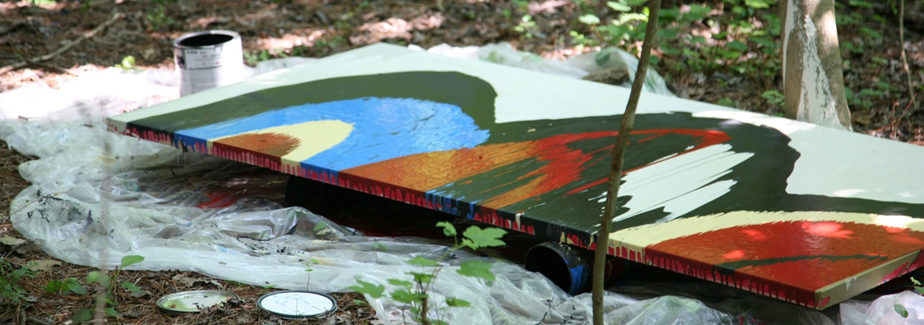
|
Tribute to Picasso The artist was in Chicago in April of 2010 to unveil his newest painting, Picasso Tribute. It can be seen on the seventh floor of Burnham Pointe, the 28-storey luxury residential and retail tower in Chicago's Printer's Row. Hickok remembers his last trip to Chicago: "When I was invited to do the Burnham project, I came to the city but I had no intention, at that time, of doing this tribute. I just went to Daley Plaza to see the Picasso again and take some photos. The plaza was filled that day with booths, you know the food booths of some ethnic festival, so it was a challenge. I had to shoot from some pretty bizarre angles to avoid the white tents everywhere. But as it turned out, that forced effort produced some amazing shots and you see them in this work. Picasso Tribute (5 ft. x 15 ft.) is a charcoal and acrylic creation, a mural composed of five separate panels. "Picasso worked with charcoal a great deal," Hickok says. "I used big, thick sticks of it. I put charcoal over the grey section and then I just took the acrylic and painted over it." |
|
The focal point of the piece is the eye pairs, along with the bold claw- and wing-like appendages of the beast. "Picasso was strongly influenced by the African mask," says Hickok, "and I wanted to capture that part of Africa, capture it wild." Along with Picasso Tribute, the twelve-panel Burnham Mural, featuring the famous Chicago architect, is on display on the seventh floor. The environmental work, Peace Plea, hangs in the lobby. These pieces, commissioned by J Bella Interiors of Tempe, Arizona, can be seen at Burnham Pointe, 730 S. Clark St., Chicago. (See Videos, below, to watch the artist at work, creating Green Plea and Tribute to Picasso. The rapid-fire stop-animation video of the Picasso piece takes the viewer from start to finish as 846 stills flash by in just five minutes). |
